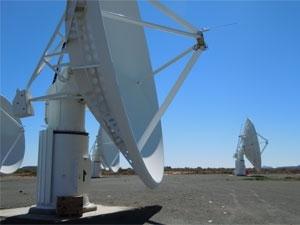
The Square Kilometre Array (SKA) - the world's largest radio telescope, hosted in SA and Australia - is moving on to the next phase, which will be the last stage before actual construction begins in 2018.
This comes after the SKA board of directors met at the project's headquarters, near Manchester in the UK last week, and unanimously agreed to move the radio telescope forward to its final pre-construction phase.
The design of the EUR650 million (about R8.4 billion) first phase of the SKA - known as SKA1 - is now defined, says the SKA Organisation.
Professor Philip Diamond, DG of the organisation, says the board strongly supports taking the project - which has seen good momentum thus far - forward. "The SKA will fundamentally change our understanding of the universe. We are talking about a facility that will be many times better than anything else out there."
SKA scope
Presently in its design phase, the international project, currently consisting of 11 nations, has been engaged over the last 20 months in a rigorous science-driven, engineering process with teams from around the world working to refine the design of SKA1.
The SKA instruments will be located in two countries - SA and Australia. In the first phase of the project, SA will host about 200 parabolic antennas or dishes - similar to, but much larger than a standard domestic satellite dish - and Australia more than 100 000 "dipole" antennas, which resemble domestic TV aerials.
Professor Robert Braun, science director of the SKA Organisation, says these two complementary instruments will allow scientists to address a broad range of science, such as observing pulsars and black holes to detect the gravitational waves predicted by Einstein; testing gravity, and looking for signatures of life in the galaxy.
"We will also observe one of the last unexplored periods in the history of our universe - the epoch of re-ionisation - looking back to the first billion years of the universe at a time when the first stars and galaxies are forming."
The Australian SKA Pathfinder telescope, a precursor telescope already operating as a first-class instrument in its own right in Western Australia, will continue to provide survey capability that will complement the overall SKA programme. In SA, the MeerKAT telescope, another precursor to the SKA, will be integrated into the dish array.
"This will build on SA's considerable investment in science and in particular radio astronomy," says Dr Phil Mjwara, DG of the South African Department of Science and Technology.
The next step, says chairman of the SKA board of directors Professor John Womersley, is to work with the SKA partner countries to develop an international organisation before the start of the construction in 2018.
Share